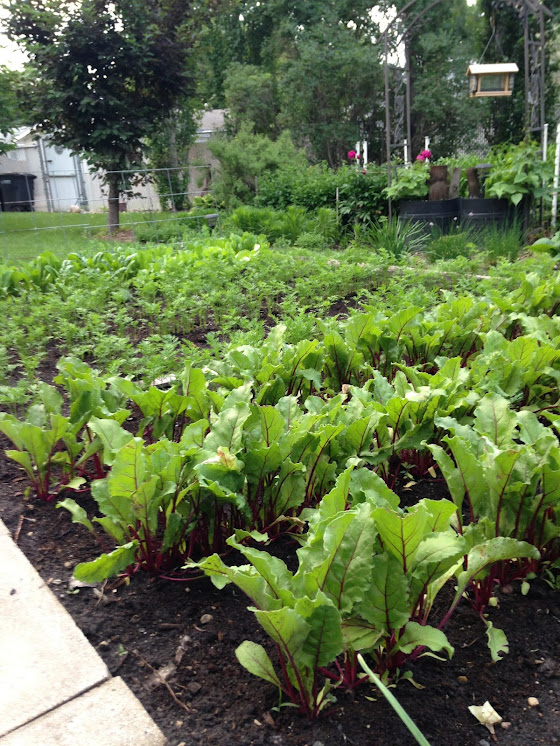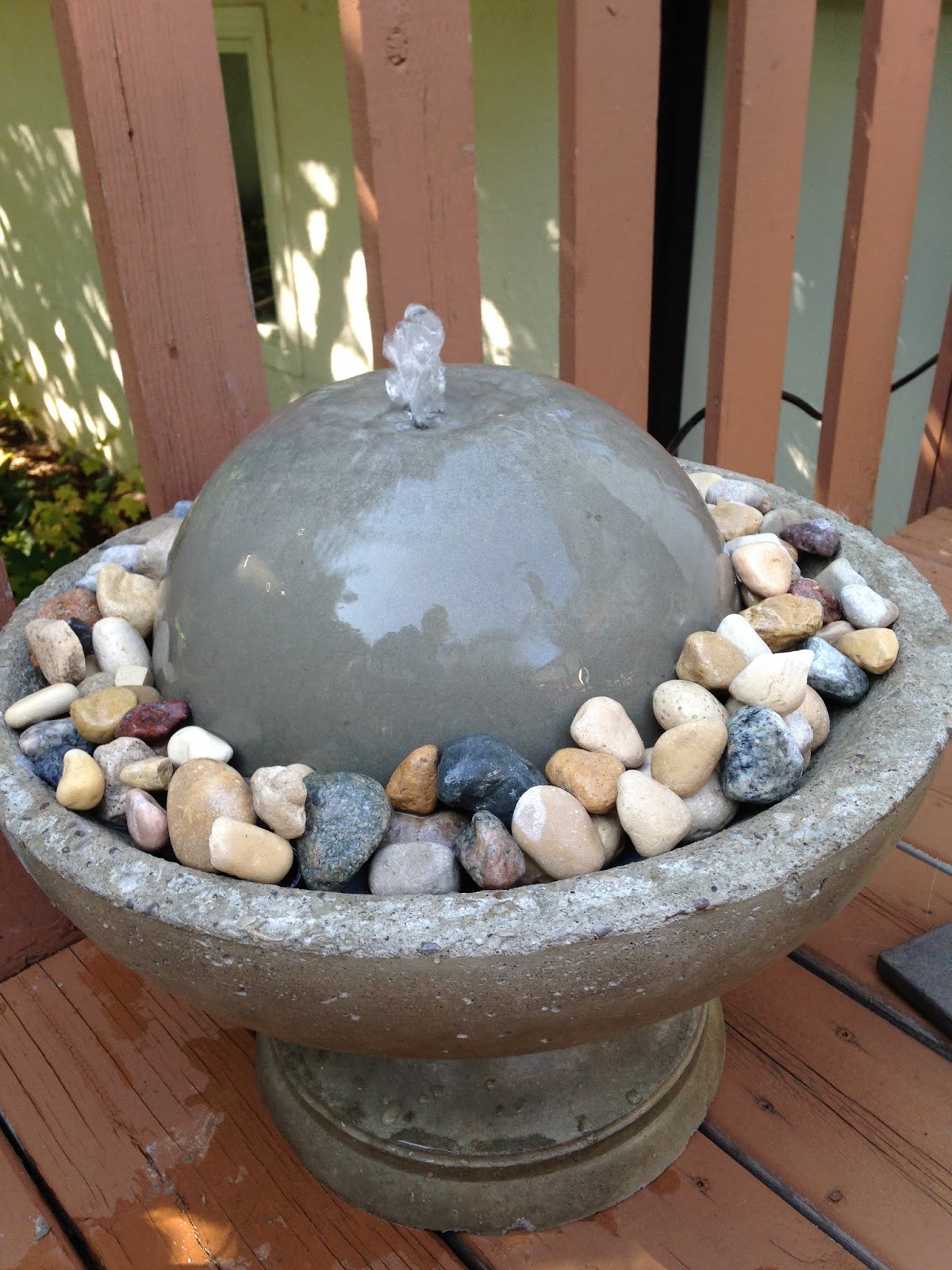Backyard Vegetable Gardening
BACKYARD VEGETABLE GARDENING
"Garden Vegetables & Fruit We Grow"
Beets, Carrots, Beans, Lettuce, Peas, Onions, Tomatoes,
Potatoes, Cabbage, Garlic, Raspberries, Pumpkins, Zucchini,
Strawberries, Broccoli, Kohlrabi, Peppers,
Herbs- (Basil, Thyme, Rosemary), Spinach, Apples, Chives,
Garlic chives, Rhubarb, Crab apples, "Saskatoon Berries"
Bird screens to protect young seedlings.
Beet plugs grown in the greenhouse are set in place rather than direct seeding beets.
Bigger plants resist bird & weather damage with earlier harvests.
Bigger plants resist bird & weather damage with earlier harvests.
Beet plugs well on their way
Beets grown from plugs on the left Grown from seeds on the right
Beet seedling rows are mulched with grass clippings to preserve moisture and control weeds.


 |
| Cucumbers started in the greenhouse |
Cucumbers planted in groups of three. Plastic weather shield is
wrapped around the bed to alleviate the threat of spring frost, wind
and provide increased growing temperatures.
The cucumber are encouraged to grow vertically to 6' utilizing cages
and wire coral panels. Frames are supported by plastic fence posts.
Bed size 6'Long X 4' Wide X 6' high.
(See below)
Vertical gardening enables ease of harvest and utilizes less space. Soaker hose is used to water to avoid wetting the foliage reducing disease. Pollination is enhanced by better bee access with vertical beds. 20-20-20 fertilizer & Epsom salt (magnesium sulfate) soluble fertilizer is added weekly at a rate of 1 tbsp. / gallon of water
Garden yielded 45 quarts of pickles & relish. Fresh cucumbers consumed from the garden beginning the end of June till mid September. Neighbors and friends were also benefactors of ample bounty. Refrigerator pickles extended the season to later dates as well.
Dill generally volunteers in the garden from one year to the next.
Dill is used in pickles, spreads, garnishes and sauces.
Seed it once and it's there forever.
Onion seedlings planted from seed in the greenhouse. The seedlings produce a larger onion than using onion sets. Using seed gives you a better onion variety selection than using sets.
Garlic and onion plants well on there way.
Epsom salts(magnesium sulfate) & 20-20-20 soluble fertilizer at the rate
of 1 tbsp. / gallon of water is applied weekly until the onions start to " bulb" out.
Lawn grass clipping are used as row covers to keep weeds down
& preserve moisture.
Garlic planted in the spring as soon as the snow was off the raised garden
Garlic was up when we had a late spring snow fall.
Garlic recovered after the snow
and keep weeds in check.
Garlic & onions are harvested, tied in bunches by their tops and hung to mature
and cure in the garage. We store onions & garlic in a cool, dry & dark wooden bin that provides us with year long availability & consumption. We also processed(chopped)
and cure in the garage. We store onions & garlic in a cool, dry & dark wooden bin that provides us with year long availability & consumption. We also processed(chopped)
& froze 7 pints in freezer bags for weekly use that was very handy; quick way in the
kitchen to prepare for baking & frying of meals(no muss no fuss)
Tomato seedlings raised in the greenhouse from seed ready for transplanting in the garden.
Tomato seedlings transplanted into the garden. Plants are placed into the garden with a watering pail dug 6" into the ground with weeping holes at ground level and at the pail bottom. Filling the pail method for watering eliminated getting the foliage wet when watering reducing leaf diseases(powdery mildew) and provide a slow dribble effect for water conservation. Plastic is wrapped around the cages to give a greenhouse effect to help avoid damage from wind, late spring frosts and provide a warmer seedling growing atmosphere.
Plastic is removed when plants mature and spring weather moderates.
Tomatoes are fertilized weekly with soluble 20-20-20 and Epsom salts.
Egg shells are placed in the seedling hole when planted and bone meal is
applied around the base of the plants to help reduce the threat of blossom end rot.
Rotted manure or compost is placed around the plants for moisture retention,
weed control and added nutrients.
Tomato plants yielded 48 quarts of canned tomatoes including salsa(see above left),
paste, juice & soups. Fresh eating and salads were additional benefits. Garden yields were increased by picking tomatoes on the green side and ripening in covered cardboard boxes. Early picking allows plants to increase bloom production & yield. Late season crops were allowed to ripen on the vine as an added benefit.
Potatoes were gown for fresh eating in the fall. Fertilizer is applied weekly.
20-20-20 soluble fertilizer is used.
Yellow bush beans were grown in adjoining rows. 12 ' row yielded 15 pint freezer bags, fresh meals and an abundance of soups & stew provisions.
Scarlet Runner green beans were grown. Plants were 10' high with great yields.
Peas are seeded in double rows with a 4' wire livestock panel between for support.
We fertilize our peas with Epsom salts to get the benefit of the sulfur that legumes utilize.
The panels allow the plants to stay dryer, ease of access & utilize less space to grow.
We have had the peas provide a second bloom flush depending on the weather
and disease pressure( powdery mildew)
Peas at early bloom stage
Cabbage seeds started in the greenhouse in mid May.
(see below)
The raised bed cover allows sun and rain through but prevents
cabbage butterflies, root maggot flies and other insects from damaging
the plants.
weed control
Lettuce ready to harvest!
Ever bearing strawberry bed. Bird screen is used to keep the birds away
Zucchini seedling transplanted from the greenhouse at the end of June.
Zucchini plant with water filled frost blanket.
Zucchini seedlings are started in the greenhouse and
planted in the garden at the end of June.
Prolific zucchini harvest provides us with 6 quarts of shredded freezer product used for
cakes, muffins & breads. The zucchini is also chopped into chunks and pineapple juice added to make canned pineapple chunks used on pizzas and in Jello fruit salads.
Fresh eating is another added benefit and used to a lesser degree.
Neighbors & family share in the bounty as well.
Red rhubarb harvested
Rhubarb is picked when the stems are a decent size. Generally we get two pickings per season
although depending on the year sometimes we can get three pickings. We always allow enough
leaf canopy at seasons end to allow the plants to go into winter with vigor for next year.
Processing the rhubarb involves chopping and freezing for later use. Pies, jams,
slushie drink mix, juices, puddings and rhubarb crisp desert
Peppers grown in the flower garden
Peppers harvested at summers end.
Apples & crab apples are used to make juice, pies, apple butter, fruit leather
& for fresh eating
& for fresh eating
Carrot seedlings in early spring
Carrots are mulched between the rows for weed control and moisture conservation.
Epsom salt & 20-20-20 soluble fertilizer are used weekly.
Carrots are being processed to make dill carrot pickles(see above).
Carrots are used fresh, diced & frozen preserves, soups, Xmas pudding,
shredded for cakes & muffins, Refrigerated carrots keep well into December
for fresh eating.
Garden bee friend pollinating our pumpkins!
Pumpkins grown in our garden are a compact pumpkin variety;
grown with limited space constraints in mind. Yielded 7 pumpkins with
an average 12 " width. Processed 11 frozen pumpkin packages
to make pies, cakes & muffins. We had an added benefit of
roasted pumpkin seeds as a snack food treat.
Halloween added to the fun!
Final thoughts🍅🍓🍎
- Start small, don't be scared to ask a neighbor for advice -we do!
- join a gardening club - we did!
- search the NET for suggestions - we do!
- If it doesn't work - try again - we do! don't fret on your mistakes!
- Not every plant suits your area!
- learn to cook and preserve your bounty- we did!
- Share your ideas and garden - we do!
- local greenhouse staff are a great help - ask for assistance!
- Finally - LOVE IT & LIVE IT
ENJOY !
























































































Comments
Post a Comment